#The Royal British Legion Poppy Factory
Photo


Queen Camilla’s Patronages
The Royal British Legion Poppy Factory (Patron from 24.10.2013)
For nearly 90 years, The Poppy Factory in Richmond, Surrey, has been making poppies, crosses and wreaths for the Royal Family and the Royal British Legion’s annual Remembrance Day appeal. In recent years, The Poppy Factory has transformed itself into a thoroughly modern charity. As well as providing work for disabled veterans at its HQ in Richmond, The Poppy Factory uses its unique expertise to help its clients find work with many commercial organisations all over the UK. The Poppy Factory has a vision that “no disabled veteran who wants to work should be out of work” and aims to become the recruitment provider of choice for its ex-Forces clients and for employers alike. Join us in our drive to get disabled veterans into meaningful, rewarding and sustainable employment. Having valiantly served their country, we think they deserve it.
22 notes
·
View notes
Text
🌹 Remembrance 2023 🌹
Programme of events
The programme for Royal Remembrance events 2023 is as follows:
Wednesday 8th November 2023
The Duke of Edinburgh carried out military engagements in Telford. His Royal Highness concluded the day at a reception at Dawley Town Hall for veterans and local groups supporting the Armed Forces community.
Thursday 9th November 2023
The Queen will attend the 95th year of the Field of Remembrance at Westminster Abbey.
Saturday 11th November 2023
The Princess Royal will attend The National Memorial Arboretum Armistice Day Service in Staffordshire.
The King and Queen will attend the annual Royal British Legion Festival of Remembrance at the Royal Albert Hall.
The Festival will also be attended by The Prince and Princess of Wales, The Duke and Duchess of Edinburgh, The Princess Royal and Vice Admiral Sir Tim Laurence, The Duke and Duchess of Gloucester and The Duke of Kent.
Sunday 12th November 2023
The King and Queen will attend the National Service of Remembrance at the Cenotaph on Remembrance Sunday.
The Prince and Princess of Wales, The Duke and Duchess of Edinburgh, The Princess Royal and Vice Admiral Sir Tim Laurence and The Duke and Duchess of Gloucester will also attend the Service.
The King will lay a wreath, the design of which closely resembles the wreath produced for HM King George VI. The wreath’s 41 open style poppy petals are made from bonded fabric and mounted on an arrangement of black leaves, as is traditional for the Sovereign. The wreath’s ribbon bears The King’s racing colours; scarlet, purple and gold. The Royal racing colours were also incorporated into the Wreaths of King George V, King George VI and Queen Elizabeth II.
The Queen will view the Service from the Centre Balcony of the FCDO. On Her Majesty’s behalf, her equerry Major Ollie Plunket, The Rifles, will lay a wreath which closely resembles the wreath produced for HM Queen Elizabeth The Queen Mother. Its 95 closed style poppy petals are made from bonded fabric and the Wreath will bear the colours from HM The Queen’s racing silk – brown, red and yellow.
The King and Queen’s wreaths have been produced by The Poppy Factory.
The Prince of Wales will lay a wreath featuring The Prince of Wales plumes. The wreath will bear a ribbon in Welsh red.
Following the Service, The Princess Royal will take the Salute at the March Past of Veteran Organisations on Horse Guards Parade.
Information from the Royal Family website
#remembrance 2023#king charles iii#queen camilla#william prince of wales#catherine princess of wales#prince edward duke of edinburgh#sophie duchess of edinburgh#princess anne#princess royal#tim laurence#timothy laurence#prince richard duke of gloucester#prince edward duke of kent
40 notes
·
View notes
Text
Hello, Tumblr. It's November now, and Armistice Day (also called Remembrance Day) is coming up. And that means the Poppy Appeal will be happening.
Now, the red poppies were originally a fine thing. They used to be made by otherwise-unemployed disabled veterans, as a means both of physical therapy and of providing an income to people who would otherwise not have them. They represented remembrance of the horrors of first one, then two World Wars, and the commitment to that never happening again.
Notice how all of that is in the past tense. In England, Wales and Northern Ireland, the poppies haven't provided employment to disadvantaged people for years (though in Scotland, they're still handmade by disabled veterans). Much is made of the original Poppy Factory still existing, which it does, but there they make wreaths; the individual poppies are not veteran-made. The Royal British Legion, which sells them, says they express "support the Armed Services Community past and present" (emphasis mine). They do, to their limited credit, explicitly claim it's not about glorifying militarism, but their consistent support of all things military-industrial-complex puts the lie to this. The memorial services they sponsor are full of pomp and circumstance and jingoism, and the fact that the Legion also sells "bling poppies", with crystals and such embellishments, is pretty indicative to me that the neither solemn remembrance nor the "never again " sentiment is the purpose any longer, but rather crass commercialism in service of the military. Even former military personnel occasionally speak out about the way the Legion uses its platform to marshall support for British military "interventions" overseas.
But there is an alternative.
The Peace Pledge Union, an organisation actually devoted to the ideal of an end to all wars, makes white poppies. These are explicitly about remembering not just "the armed services community", but all those who've died in war. With an ongoing attempt at genocide in Palestine (and, though numerically far less impactful, responses thereto also targeting civilians in Israel) — not to mention the continuing invasion of Ukraine by Russia or the situations in Azerbaijan, or between Ethiopia and Egypt, or more others than I can name — work towards peace and explicit acknowledgement of the civilian costs of war are as vital as ever.
So please: if you were going to buy a red poppy, or if you weren't but can afford it, consider donating to the PPU. They also have a list of places you can get a white poppy, if you don't want to order them directly.
Never Again means Now, and it means Us, and it means Not In Our Name.
11 notes
·
View notes
Text
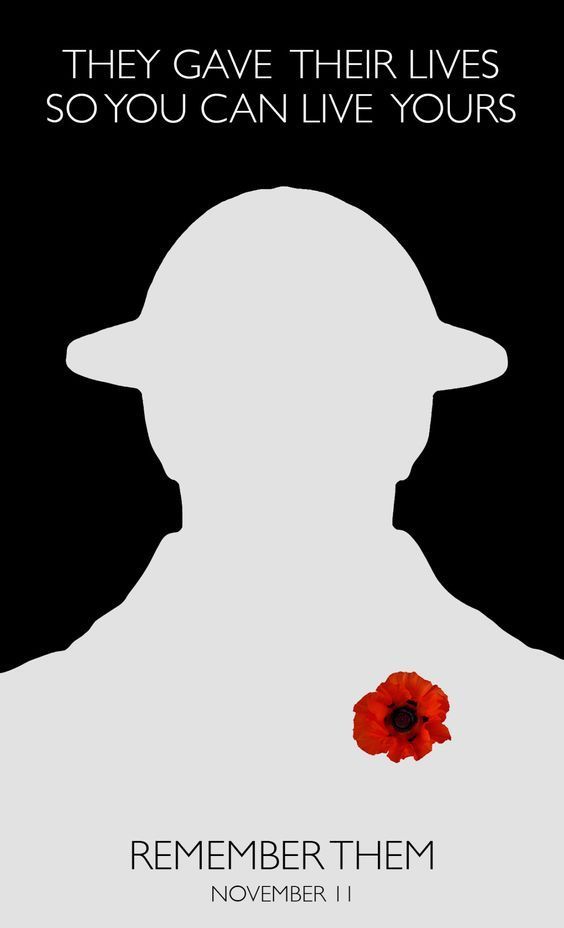
At the eleventh hour on the eleventh day of the eleventh month – we will Remember Them.
The red poppy is a symbol of both Remembrance and hope for a peaceful future.
During WW1, much of the fighting took place in Western Europe. The countryside was blasted, bombed and fought over repeatedly. Previously beautiful landscapes turned to mud; bleak and barren scenes where little or nothing could grow.
There was a notable and striking exception to the bleakness - the bright red Flanders poppies. These resilient flowers flourished in the middle of so much chaos and destruction, growing in the thousands upon thousands.
Shortly after losing a friend in Ypres, a Canadian doctor, Lieutenant Colonel John McCrae was moved by the sight of these poppies and that inspiration led him to write the now famous poem 'In Flanders Fields'.
The poem then inspired an American academic named Moina Michael to adopt the poppy in memory of those who had fallen in the war. She campaigned to get it adopted as an official symbol of Remembrance across the United States and worked with others who were trying to do the same in Canada, Australia, and the UK.
Also involved with those efforts was a French woman, Anna Guérin who was in the UK in 1921 where she planned to sell the poppies in London.
There she met Earl Haig who was persuaded to adopt the poppy as our emblem in the UK. The Royal British Legion, which had been formed in 1921, ordered nine million poppies and sold them on 11 November that year.
The poppies sold out almost immediately. That first 'Poppy Appeal' raised over £106,000 to help veterans with housing and jobs; a considerable sum at the time.
In view of how quickly the poppies had sold and wanting to ensure plenty of poppies for the next appeal, Major George Howson set up the Poppy Factory to employ disabled ex-servicemen.
The demand for poppies in England continued unabated and was so high, in fact, that few poppies actually managed to reach Scotland. To address this and meet growing demand, Earl Haig's wife Dorothy established the 'Lady Haig Poppy Factory' in Edinburgh in 1926 to produce poppies exclusively for Scotland.
Today, over five million Scottish poppies (which have four petals and no leaf unlike poppies in the rest of the UK) are still made by hand by disabled ex-Servicemen at Lady Haig's Poppy Factory each year.
Daily inspiration. Discover more photos at Just for Books…?
9 notes
·
View notes
Text

19 January 2023
Her Royal Highness The Princess Royal, Member, the Royal British Legion Scotland, re-opened Lady Haig Poppy Factory, 66 Logie Green Road, Edinburgh, and was received by Brigadier John Thomson (Deputy Lieutenant of the City of Edinburgh).
📸: Holly Saunders
30 notes
·
View notes
Text
The programme for Royal Remembrance. events 2023 is as follows:
Wednesday 8th November 2023
The Duke of Edinburgh carried out military engagements in Telford. His Royal Highness concluded the day at a reception at Dawley Town Hall for veterans and local groups supporting the Armed Forces community.
Thursday 9th November 2023
The Queen will attend the 95th year of the Field of Remembrance at Westminster Abbey.
Saturday 11th November 2023
The Princess Royal will attend The National Memorial Arboretum Armistice Day Service inStaffordshire.
The King and Queen will attend the annual Royal British Legion Festival of Remembrance at the Royal Albert Hall.
The Festival will also be attended by The Prince and Princess of Wales, The Duke and Duchess of Edinburgh, The Princess Royal and Vice Admiral Sir Tim Laurence, The Duke and Duchess of Gloucester and The Duke of Kent.
Sunday 12th November 2023
The King and Queen will attend the National Service of Remembrance at the Cenotaph on Remembrance Sunday.
The Prince and Princess of Wales, The Duke and Duchess of Edinburgh, The Princess Royal and Vice Admiral Sir Tim Laurence and The Duke and Duchess of Gloucester will also attend the Service.
The King will lay a wreath, the design of which closely resembles the wreath produced for HM King George VI. The wreath’s 41 open style poppy petals are made from bonded fabric and mounted on an arrangement of black leaves, as is traditional for the Sovereign. The wreath’s ribbon bears The King’s racing colours; scarlet, purple and gold. The Royal racing colours were also incorporated into the Wreaths of King George V, King George VI and Queen Elizabeth II.
The Queen will view the Service from the Centre Balcony of the FCDO. On Her Majesty’s behalf, her equerry Major Ollie Plunket, The Rifles, will lay a wreath which closely resembles the wreath produced for HM Queen Elizabeth The Queen Mother. Its 95 closed style poppy petals are made from bonded fabric and the Wreath will bear the colours from HM The Queen’s racing silk – brown, red and yellow.
The King and Queen’s wreaths have been produced by The Poppy Factory.
The Prince of Wales will lay a wreath featuring The Prince of Wales plumes. The wreath will bear a ribbon in Welsh red.
Following the Service, The Princess Royal will take the Salute at the March Past of Veteran Organisations on Horse Guards Parade.
0 notes
Text
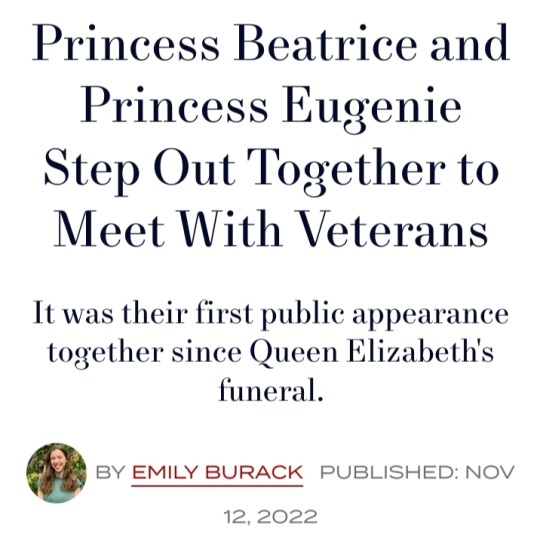
Royal sisters Princess Beatrice and Princess Eugenie are marking Armistice Day by visiting with veterans.
Eugenie shared on her Instagram (November 11) that they visited Royal British Legion Industries—a charity that provides vital care, welfare and employment services to Armed Forces veterans across the UK.
She wrote:
"We met incredible veterans who have completed RBLI’s #Lifeworks employability programme. It was wonderful to see the programme in action at the charity’s social enterprise factory which provides meaningful employment to veterans."
The two sisters then visited Queen Elizabeth Court, an assisted living facility. There, Eugenie writes:
"I also met Vi, who told me she served with my late Grandmother, which brought me such pride."
She ended her Instagram post with a tribute to veterans, writing:
"This Armistice Day we remember and pay tribute to the Fallen, the inspiring veterans and those currently serving in the Armed Forces across the world."
Both sisters affixed poppy pins to their jackets, which members of the royal family (and other Brits) typically wear during November to honor fallen troops.
The poppy comes from a poem "In Flanders Fields" by John McCrae, who wrote, "In Flanders' fields the poppies blow / Between the crosses, row on row..."
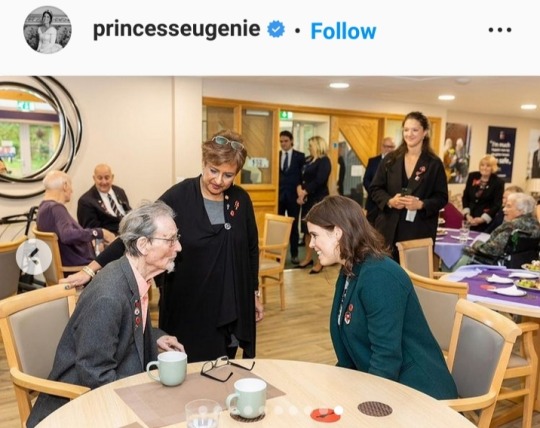


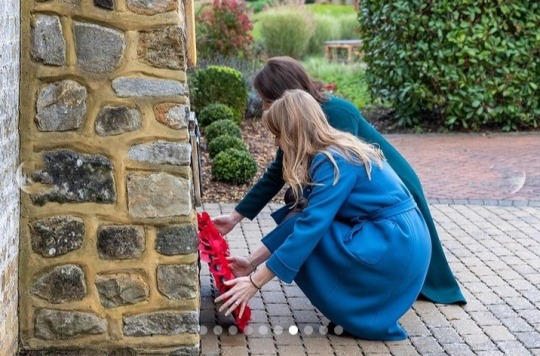
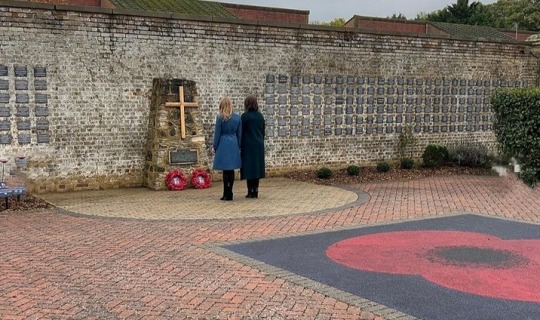
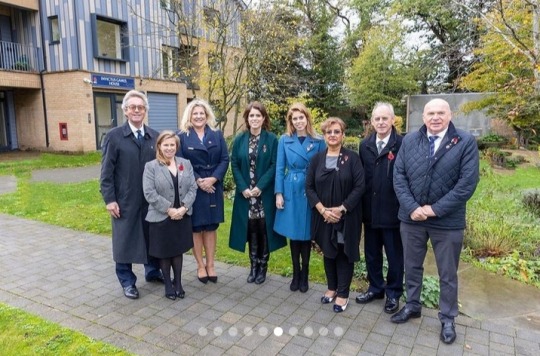

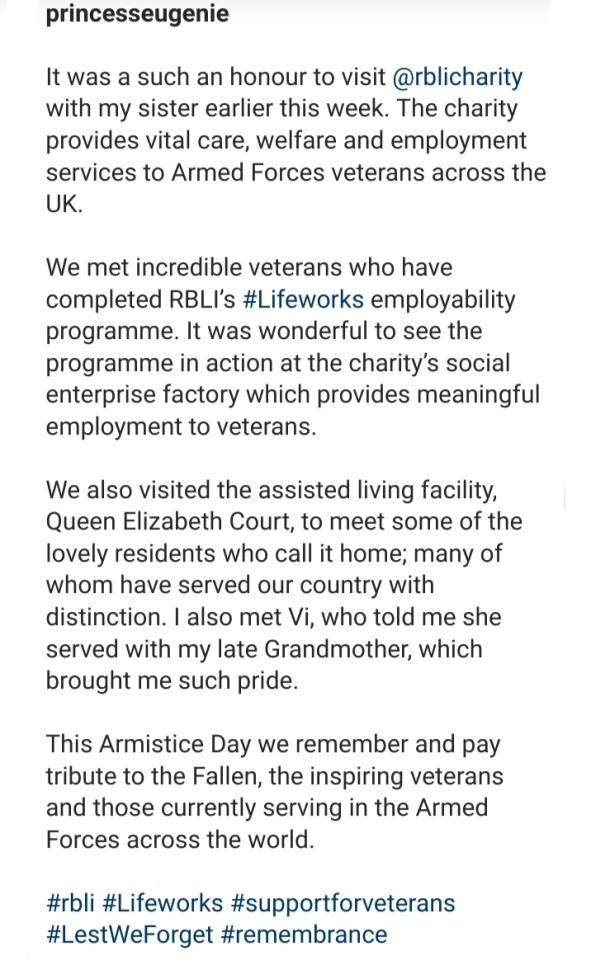
11 November 2022
(Beatrice is not on Instagram, but her husband, Edo Mapelli Mozzi, is on the platform.)
#In Flanders Fields#Princess Beatrice#Princess Eugenie#Armistice Day#Royal British Legion Industries#Queen Elizabeth Court#John McCrae#British Royal Family
1 note
·
View note
Text
Remembrance poppy flag

We owe so much to those who bravely serve, to our veterans, to the fallen, and to the families who love and support them.Īnd every day-generation after generation-they have stepped up, and put their lives at risk to make our country more prosperous, secure, and free.Īnd the past year and a half has been no different. We pay tribute to our veterans, to those who have been injured in the line of duty, and to all of those who have made the ultimate sacrifice for our freedom, our peace, and our democracy. Instead, they wear the symbolic red flower on Memorial Day-the last Monday in May-to commemorate the sacrifice of so many men and women who have given their lives fighting for their country.Generation after generation, Canadians have served and sacrificed as members of the Armed Forces.Īnd today, we honour the brave women and men in uniform who serve and defend our country-now and throughout our history. Americans don’t typically wear poppies on November 11 ( Veterans Day), which honors all living veterans. In the United States, the tradition has developed a little differently. According to McNab, the Poppy Factory (now located in Richmond, England and Edinburgh, Scotland) is still the center of poppy production, churning out as many as 45 million poppies made of various materials each year. Today, nearly a century after World War I ended, millions of people in the United Kingdom, Canada, France, Belgium, Australia and New Zealand don the red flowers every November 11 (known as Remembrance Day or Armistice Day) to commemorate the anniversary of the 1918 armistice. Other nations soon followed suit in adopting the poppy as their official symbol of remembrance. READ MORE: The Last Official Death of WWI Was a Man Who Sought Redemption The following year, Major George Howson set up the Poppy Factory in Richmond, England, in which disabled servicemen were employed to make the fabric and paper blooms. Within a year, Guérin brought her campaign to England, where in November 1921 the newly founded (Royal) British Legion held its first-ever “Poppy Appeal,” which sold millions of the silk flowers and raised over £106,000 (a hefty sum at the time) to go towards finding employment and housing for Great War veterans. After the war ended, she returned to the university town of Athens, and came up with the idea of making and selling red silk poppies to raise money to support returning veterans. Inspired by McCrae’s verses, Michael wrote her own poem in response, which she called “We Shall Keep Faith.”Īs a sign of this faith, and a remembrance of the sacrifices of Flanders Field, Michael vowed to always wear a red poppy she found an initial batch of fabric blooms for herself and her colleagues at a department store. A professor at the University of Georgia at the time the war broke out, Michael had taken a leave of absence to volunteer at the New York headquarters of the Young Women’s Christian Association (YWCA), which trained and sponsored workers overseas. READ MORE: How World War I Changed LiteratureĪcross the Atlantic, a woman named Moina Michael read “In Flanders Field” in the pages of Ladies’ Home Journal that November, just two days before the armistice. Its fame had spread far and wide by the time McCrae himself died, from pneumonia and meningitis, in January 1918. Published in Punch magazine in late 1915, the poem would be used at countless memorial ceremonies, and became one of the most famous works of art to emerge from the Great War. Struck by the sight of bright red blooms on broken ground, McCrae wrote a poem, “In Flanders Field,” in which he channeled the voice of the fallen soldiers buried under those hardy poppies. As Chris McNab, author of “The Book of the Poppy,” wrote in an excerpt published in the Independent, the brilliantly colored flower is actually classified as a weed, which makes sense given its tenacious nature. But in the warm early spring of 1915, bright red flowers began peeking through the battle-scarred land: Papaver rhoeas, known variously as the Flanders poppy, corn poppy, red poppy and corn rose. From the devastated landscape of the battlefields, the red poppy would grow and, thanks to a famous poem, become a powerful symbol of remembrance.Īcross northern France and Flanders (northern Belgium), the brutal clashes between Allied and Central Powers soldiers tore up fields and forests, tearing up trees and plants and wreaking havoc on the soil beneath. The Great War, as it was then known, also ravaged the landscape of Western Europe, where most of the fiercest fighting took place. From 1914 to 1918, World War I took a greater human toll than any previous conflict, with some 8.5 million soldiers dead of battlefield injuries or disease.

0 notes
Photo

24 October 2013 | Camilla, Duchess of Cornwall holds a poesy of poppies, after her visit to the Poppy Factory in London, England. Since 1922, the Poppy Factory has delivered the single-minded ambition to help wounded, injured or sick ex-Servicemen and women and their dependents to find paid, meaningful civilian employment. Workers at the factory produce millions of poppies, wreaths and wooden crosses by hand for the Royal British Legion's annual Remembrance Day appeal. (c) Alastair Grant - WPA Pool /Getty Images
1 note
·
View note
Photo

The Poppy Collection ® Women of The First World War Brooch . ▪️ Women played a huge role in the First World War. They served as nurses in the field hospitals, & here at home. They worked in factories, making munitions. They worked on the land. And they were recognised afterwards with the right to vote. . The brooch is beautifully packaged in a floral design box. Each brooch comes with a certificate commemorating the life of a woman who lost her life as a direct result of the First World War. These names are recognised by CWGC as women serving in the auxiliary units during the First World War. . 100 years on, The Royal British Legion have created this special brooch dedicated to the memory of the courageous women who served & lost their life as a direct result of the First World War. . Designed exclusively for the Centenary year, this stunning brooch adds a vintage feel to the classic two petal enamel poppy. Plated with a gold tone & hand finished with brilliant baguette crystals, this charming brooch is the perfect way to support The Royal British Legion. . 100% of the profits go to the Royal British Legion. The Poppy Shop is the online shop for The Royal British Legion. This means all purchases made from the Poppy Shop help to fund the work of the Legion, providing lifelong support for the Armed Forces community - serving men & women, veterans, & their families. . . Visit: http://tidd.ly/88752f8b . ▪️ For more booches like this from the Poppy shop collection visit The Poppy Shop, link is in our profile page bio. . Check our stories for selected items. . . . #poppyappeal #poppybrooch #poppy #Brooch #remembrance #history #Lestweforget ##Poppies #poppycollection #Royalbritishlegion #Britishlegion #BritishArmy #RAF #RoyalNavy #Royalairforce #Britisharmedforces #RoyalFamily #Royals #jewels #rememberthem #remembranceday #BritishMonarchy (at London, United Kingdom) https://www.instagram.com/p/B4nTNWagxD0/?igshid=ml16tv38albg
#poppyappeal#poppybrooch#poppy#brooch#remembrance#history#lestweforget#poppies#poppycollection#royalbritishlegion#britishlegion#britisharmy#raf#royalnavy#royalairforce#britisharmedforces#royalfamily#royals#jewels#rememberthem#remembranceday#britishmonarchy
2 notes
·
View notes
Text


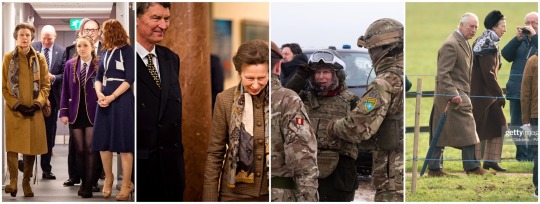
The Princess Royal’s Official Engagements in January 2023
05/01 Oxford Farming Conference
10/01 Traveled to Cyprus and attended a Reception and Dinner 🇨🇾
11/01 Meeting with the President of Cyprus, Nicos Anastasiades at the Presidential Palace, Nicosia.
Visited personnel from the Royal Logistic Corps who are currently serving with the United Nations Peacekeeping Force in Cyprus (UNFICYP), on Operation TOSCA.
During the visit, The Princess was able to view different areas of the Buffer Zone and Nicosia, including the Ledra Palace Hotel, the abandoned Nicosia International Airport and Wayne's Keep Military Cemetery where there was a Service of Remembrance and Wreath Laying Ceremony UN Buffer Zone, Nicosia.
Opened Queen Berengaria Military School at Dhekelia Garrison, which serves British military communities from Dhekelia and Nikolaos.
12/01 As President of the Royal Yachting Association, HRH attended their Annual Luncheon at Trinity House, London
As Royal Patron of the Motor Neurone Disease Association, HRH attended a Reception and the ""Insights: Women in Sport"" Panel Discussion at the British Olympic Association
14/01 Opened the Gloucester Health and Care NHS Trust's Therapeutic Allotment in Gloucester
16/01 unofficial Accompanied by Sir Tim Laurence and Lady Gabriella Windsor, she attended King Constantine II’s funeral in Tatoi, Greece 🇬🇷
17/01 As President, of the UK Fashion and Textile Association, HRH opened Kalopsia Collective's new textiles facility
Visited the FastBlade Structural Testing Facility, at the University of Edinburgh
As Patron of the Royal Caledonian Hunt, HRH attended a Dinner to mark the Two Hundredth Anniversary of Royal Patronage
18/01 Investitures held at the Palace of Holyroodhouse 🏴
Planted a tree in Jubilee Wood, Holyrood Park, Edinburgh, to commemorate The late Queen's Platinum Jubilee
Her Royal Highness, Member, the Royal British Legion Scotland, afterwards Re-opened Lady Haig Poppy Factory, Edinburgh
Attended a Reception for Nurses and Midwives at Old College, University of Edinburgh.
Visited WildGenes Laboratory at Edinburgh Zoo, to mark the Laboratory's Tenth Anniversary
20/01 Visited 9 Regiment at Buckley Barracks, Lower Stanton St. Quintin, Wiltshire.
24/01 HRH, accompanied by Sir Tim Laurence, traveled to Estonia and attended a Dinner held by Alar Karis, President of Estonia at Kadriorg Palace, Tallinn. 🇪🇪
25/01 As Colonel-in-Chief of The King's Royal Hussars, accompanied by Vice Admiral Sir Tim Laurence, HRH visited the NATO Enhanced Forward Presence at Tapa Military Base, Estonia, and later attended a Reception given by His Majesty's Ambassador to the Republic of Estonia at the Residence in Tallinn.
29/01 unofficial Attended a church service with King Charles III at Sandringham
Total official engagements for Anne in January (not all listed in this post): 32
Total official engagements accompanied by Tim in January: 3
#I’m going to do these every month as a kind of round up thing ☺️#hardest working royal 🫡#no choice but to stanne#I haven’t included departing or arriving in a country in the count#this is based of the court circular#and yes I’m doing a separate count for tim too#because I’m rooting for…#operation working royal tim#charles i hope ur listenanne#not all engagements are on this post#if you want a full list plz dm me 💕#princess anne#princess royal#tim laurence#timothy laurence#monthly engagement post
17 notes
·
View notes
Link
They may no longer be with us - the last of their number, Harry Patch, died in 2009, aged 111 - but we will remember them. Around the country thousands of people will pay tribute on Sunday to those who died on foreign soil or at sea for their country, and those at home who endured the anguish and hardship of global war. On the 100th anniversary of the Armistice events will take place in every corner of the British Isles to commemorate the sacrifice of a generation during the First World War, which only came to an end at 11am on November 11, 1918, after an almost incalculable loss of life. The numbers still have the power to shock. Between 1914 and 1918, 886,345 UK troops were killed. Another 228,569 troops from the wider British Empire were killed, more than 74,000 of them from India. Each one was a son, father, husband or brother who willingly or not, whether with courage or almost paralysed by fear, died in a conflict whose causes and conclusion were beyond their control. In addition there were 6.32 million civilians killed when total war visited their communities, 109,000 of them in the UK , 300,000 in France and 426,000 in Germany. The acts of remembrance being organised to commemorate this loss will be as varied as they will be moving. They range from the formal state occasion of the National Service of Remembrance at the Cenotaph, where Prime Minister Theresa May and the Prince of Wales will lay wreaths, and a special service at Westminster Abbey being attended by the Queen and other senior members of the Royal family, to the Yorkshire town of Otley, where posters will be hung on more than 100 doors to remember the man who lived there but never returned from the front line. In addition each house in the town will also display a knitted poppy, with another 16,000 installed along the railings outside of All Saints Parish Church. The familiar chimes of Big Ben will mark the centenary of the Armistice, despite the clock tower being covered in scaffolding for conservation works. The 13.7 tonne bell, which hangs in the Elizabeth Tower in Westminster, will sound 11 times at 11am today for the traditional two minutes of remembrance. It will strike a further 11 times at 12.30 with bells ringing across the UK and worldwide as part of a nationwide programme of events to mark the end of the war. Wire Sculptor Jackie Lantelli from Slimbridge in Gloucestershire, England, with her Wire Soldiers installation at St John's Churchyard, Slimbridge, Credit: PAUL NICHOLLS Many of today’s commemorative events have been communal efforts, drawing in whole families to remember the dead. In the West Midlands town of Walsall almost 100 houses in one street have been covered with 24,000 red poppies and the black silhouette statues of soldiers, symbolising the men from the area who were killed. Geoff Talbot, 74, one of those who decorated his home, said: "Lots of people have put a lot of effort to do this. In those days Aldridge was only a village, but a lot of local young men left and never came back. It is an absolutely nice way to do a tribute for them." A huge wall of 2,500 poppies also festoons the Bell Inn in nearby Willenhall, after locals painstakingly knitted the individual flowers by hand over a 24-month period. The day will not be without the kind of ironic humour one imagines would have been appreciated by the Tommies whose death in their thousands across the Western Front remain embedded in popular memory. Thwaites brewery, in Lancashire, is honouring one of WWI's Victoria Cross winners by naming the Shire horse that deliver its beer around Blackburn after him. The two-year-old gelding is being named ‘Drummer’ in honour of the East Lancashire Regiment's first WWI Victoria Cross winner, Drummer John Bent, aged 23. Bent was commended after saving a soldier from no-man's land and leading his platoon into action under fire after their officers and NCO's were all killed on 1st November 1914, near Le Gheer, Belgium. Drummer Bent’s was the 24th of a total of 628 VCs awarded during WWI. As well as recalling his heroism, the name 'Drummer' also commemorates the role of thousands of horses in the Great War. White van driver Christopher Curtis, 32, from Oldham, who served for 11 years as a Sapper in the Royal Engineers, has sketched the silhouette of a soldier standing over a field of poppies with the words "Lest We Forget" in the dirt on the back of his van. In Bolton, criminals sentenced to unpaid work orders by magistrates were deployed to decorate lamp posts, the town hall and other landmarks in the Lancashire town with 500 giant poppies. The factory in Aylesford, Kent, that makes poppies has worked around the clock for the first time to meet the unprecedented demand for the symbol of Remembrance Day, producing more than 1,500 a day for the past two and a half weeks. Mandy Barker, Head Flower Arranger, and Julia Weston, Volunteer, arrange flowers on the Remembrance Cross for Sunday's Service at York Minster Credit: Charlotte Graham/The Telegraph In a measure of the continuity of the tradition of remembrance a box of poppies believed to be from one of the early Poppy Appeals has been discovered in an old suitcase in Cardiff.. Bernie Axtell, 77, found them while searching for paperwork in his home. They are believed to date from before the Second World War and will be brought to the Cenotaph by Royal British Legion representatives today. Mr Axtell was handed the box of poppies by his friend Vic Luckhurst about 30 years ago, while working for the Legion in Street, Somerset. “I said to Vic that I would find something special to do with them,” he said. “Thirty years is a very long time to wait, but now they are doing something extraordinary." In Portsmouth a 24-hour guard of honour was being held at the city’s Cenotaph, with 200 people, including schoolchildren, veterans and serving members of the armed forces, working in 15-minute slots to stand by the monument until 10am today. Meanwhile silhouettes of soldiers from the First World War have been projected onto famous landmarks around the country by the There But Not There project to raise money for mental health charities. There include Marble Arch, Tate Modern, HMS Belfast, the Angel of the North, the Tyne Bridge, Titanic Belfast and Edinburgh Castle. In Ilfracombe, Devon, it was the bodies of people that made their mark yesterday, recreating a famous photograph from 100 years ago by spelling out the word ‘peace’ on nearby Capstone Hill to remember those who died so that we might preserve it. Residents of a Devon town have re-enacted a classic photograph to mark the 100th anniversary of the end of World War One. Locals and members of the public alike helped to recreate the original picture from 1919 by spelling out the word 'PEACE' on Capstone Hill in Ilfracombe. Credit: MARK PASSMORE/APEX The original picture from 1919 in which residents of Ilfracombe spell out the word 'peace' Credit: Apex News and Pictures
from Yahoo News - Latest News & Headlines https://ift.tt/2z37w5t
0 notes
Link
They may no longer be with us - the last of their number, Harry Patch, died in 2009, aged 111 - but we will remember them. Around the country thousands of people will pay tribute on Sunday to those who died on foreign soil or at sea for their country, and those at home who endured the anguish and hardship of global war. On the 100th anniversary of the Armistice events will take place in every corner of the British Isles to commemorate the sacrifice of a generation during the First World War, which only came to an end at 11am on November 11, 1918, after an almost incalculable loss of life. The numbers still have the power to shock. Between 1914 and 1918, 886,345 UK troops were killed. Another 228,569 troops from the wider British Empire were killed, more than 74,000 of them from India. Each one was a son, father, husband or brother who willingly or not, whether with courage or almost paralysed by fear, died in a conflict whose causes and conclusion were beyond their control. In addition there were 6.32 million civilians killed when total war visited their communities, 109,000 of them in the UK , 300,000 in France and 426,000 in Germany. The acts of remembrance being organised to commemorate this loss will be as varied as they will be moving. They range from the formal state occasion of the National Service of Remembrance at the Cenotaph, where Prime Minister Theresa May and the Prince of Wales will lay wreaths, and a special service at Westminster Abbey being attended by the Queen and other senior members of the Royal family, to the Yorkshire town of Otley, where posters will be hung on more than 100 doors to remember the man who lived there but never returned from the front line. In addition each house in the town will also display a knitted poppy, with another 16,000 installed along the railings outside of All Saints Parish Church. The familiar chimes of Big Ben will mark the centenary of the Armistice, despite the clock tower being covered in scaffolding for conservation works. The 13.7 tonne bell, which hangs in the Elizabeth Tower in Westminster, will sound 11 times at 11am today for the traditional two minutes of remembrance. It will strike a further 11 times at 12.30 with bells ringing across the UK and worldwide as part of a nationwide programme of events to mark the end of the war. Wire Sculptor Jackie Lantelli from Slimbridge in Gloucestershire, England, with her Wire Soldiers installation at St John's Churchyard, Slimbridge, Credit: PAUL NICHOLLS Many of today’s commemorative events have been communal efforts, drawing in whole families to remember the dead. In the West Midlands town of Walsall almost 100 houses in one street have been covered with 24,000 red poppies and the black silhouette statues of soldiers, symbolising the men from the area who were killed. Geoff Talbot, 74, one of those who decorated his home, said: "Lots of people have put a lot of effort to do this. In those days Aldridge was only a village, but a lot of local young men left and never came back. It is an absolutely nice way to do a tribute for them." A huge wall of 2,500 poppies also festoons the Bell Inn in nearby Willenhall, after locals painstakingly knitted the individual flowers by hand over a 24-month period. The day will not be without the kind of ironic humour one imagines would have been appreciated by the Tommies whose death in their thousands across the Western Front remain embedded in popular memory. Thwaites brewery, in Lancashire, is honouring one of WWI's Victoria Cross winners by naming the Shire horse that deliver its beer around Blackburn after him. The two-year-old gelding is being named ‘Drummer’ in honour of the East Lancashire Regiment's first WWI Victoria Cross winner, Drummer John Bent, aged 23. Bent was commended after saving a soldier from no-man's land and leading his platoon into action under fire after their officers and NCO's were all killed on 1st November 1914, near Le Gheer, Belgium. Drummer Bent’s was the 24th of a total of 628 VCs awarded during WWI. As well as recalling his heroism, the name 'Drummer' also commemorates the role of thousands of horses in the Great War. White van driver Christopher Curtis, 32, from Oldham, who served for 11 years as a Sapper in the Royal Engineers, has sketched the silhouette of a soldier standing over a field of poppies with the words "Lest We Forget" in the dirt on the back of his van. In Bolton, criminals sentenced to unpaid work orders by magistrates were deployed to decorate lamp posts, the town hall and other landmarks in the Lancashire town with 500 giant poppies. The factory in Aylesford, Kent, that makes poppies has worked around the clock for the first time to meet the unprecedented demand for the symbol of Remembrance Day, producing more than 1,500 a day for the past two and a half weeks. Mandy Barker, Head Flower Arranger, and Julia Weston, Volunteer, arrange flowers on the Remembrance Cross for Sunday's Service at York Minster Credit: Charlotte Graham/The Telegraph In a measure of the continuity of the tradition of remembrance a box of poppies believed to be from one of the early Poppy Appeals has been discovered in an old suitcase in Cardiff.. Bernie Axtell, 77, found them while searching for paperwork in his home. They are believed to date from before the Second World War and will be brought to the Cenotaph by Royal British Legion representatives today. Mr Axtell was handed the box of poppies by his friend Vic Luckhurst about 30 years ago, while working for the Legion in Street, Somerset. “I said to Vic that I would find something special to do with them,” he said. “Thirty years is a very long time to wait, but now they are doing something extraordinary." In Portsmouth a 24-hour guard of honour was being held at the city’s Cenotaph, with 200 people, including schoolchildren, veterans and serving members of the armed forces, working in 15-minute slots to stand by the monument until 10am today. Meanwhile silhouettes of soldiers from the First World War have been projected onto famous landmarks around the country by the There But Not There project to raise money for mental health charities. There include Marble Arch, Tate Modern, HMS Belfast, the Angel of the North, the Tyne Bridge, Titanic Belfast and Edinburgh Castle. In Ilfracombe, Devon, it was the bodies of people that made their mark yesterday, recreating a famous photograph from 100 years ago by spelling out the word ‘peace’ on nearby Capstone Hill to remember those who died so that we might preserve it. Residents of a Devon town have re-enacted a classic photograph to mark the 100th anniversary of the end of World War One. Locals and members of the public alike helped to recreate the original picture from 1919 by spelling out the word 'PEACE' on Capstone Hill in Ilfracombe. Credit: MARK PASSMORE/APEX The original picture from 1919 in which residents of Ilfracombe spell out the word 'peace' Credit: Apex News and Pictures
from Yahoo News - Latest News & Headlines https://ift.tt/2z37w5t
0 notes
Text

19 January 2023
Her Royal Highness The Princess Royal, Member, the Royal British Legion Scotland, re-opened Lady Haig Poppy Factory, 66 Logie Green Road, Edinburgh, and was received by Brigadier John Thomson (Deputy Lieutenant of the City of Edinburgh).
📹: Forces News
#her faceeee#why is she like that#lmaooo 😂😂😂#god i love her so much#🤎#princess anne#princess royal#annegagements
25 notes
·
View notes
Link
They may no longer be with us - the last of their number, Harry Patch, died in 2009, aged 111 - but we will remember them. Around the country thousands of people will pay tribute on Sunday to those who died on foreign soil or at sea for their country, and those at home who endured the anguish and hardship of global war. On the 100th anniversary of the Armistice events will take place in every corner of the British Isles to commemorate the sacrifice of a generation during the First World War, which only came to an end at 11am on November 11, 1918, after an almost incalculable loss of life. The numbers still have the power to shock. Between 1914 and 1918, 886,345 UK troops were killed. Another 228,569 troops from the wider British Empire were killed, more than 74,000 of them from India. Each one was a son, father, husband or brother who willingly or not, whether with courage or almost paralysed by fear, died in a conflict whose causes and conclusion were beyond their control. In addition there were 6.32 million civilians killed when total war visited their communities, 109,000 of them in the UK , 300,000 in France and 426,000 in Germany. The acts of remembrance being organised to commemorate this loss will be as varied as they will be moving. They range from the formal state occasion of the National Service of Remembrance at the Cenotaph, where Prime Minister Theresa May and the Prince of Wales will lay wreaths, and a special service at Westminster Abbey being attended by the Queen and other senior members of the Royal family, to the Yorkshire town of Otley, where posters will be hung on more than 100 doors to remember the man who lived there but never returned from the front line. In addition each house in the town will also display a knitted poppy, with another 16,000 installed along the railings outside of All Saints Parish Church. The familiar chimes of Big Ben will mark the centenary of the Armistice, despite the clock tower being covered in scaffolding for conservation works. The 13.7 tonne bell, which hangs in the Elizabeth Tower in Westminster, will sound 11 times at 11am today for the traditional two minutes of remembrance. It will strike a further 11 times at 12.30 with bells ringing across the UK and worldwide as part of a nationwide programme of events to mark the end of the war. Wire Sculptor Jackie Lantelli from Slimbridge in Gloucestershire, England, with her Wire Soldiers installation at St John's Churchyard, Slimbridge, Credit: PAUL NICHOLLS Many of today’s commemorative events have been communal efforts, drawing in whole families to remember the dead. In the West Midlands town of Walsall almost 100 houses in one street have been covered with 24,000 red poppies and the black silhouette statues of soldiers, symbolising the men from the area who were killed. Geoff Talbot, 74, one of those who decorated his home, said: "Lots of people have put a lot of effort to do this. In those days Aldridge was only a village, but a lot of local young men left and never came back. It is an absolutely nice way to do a tribute for them." A huge wall of 2,500 poppies also festoons the Bell Inn in nearby Willenhall, after locals painstakingly knitted the individual flowers by hand over a 24-month period. The day will not be without the kind of ironic humour one imagines would have been appreciated by the Tommies whose death in their thousands across the Western Front remain embedded in popular memory. Thwaites brewery, in Lancashire, is honouring one of WWI's Victoria Cross winners by naming the Shire horse that deliver its beer around Blackburn after him. The two-year-old gelding is being named ‘Drummer’ in honour of the East Lancashire Regiment's first WWI Victoria Cross winner, Drummer John Bent, aged 23. Bent was commended after saving a soldier from no-man's land and leading his platoon into action under fire after their officers and NCO's were all killed on 1st November 1914, near Le Gheer, Belgium. Drummer Bent’s was the 24th of a total of 628 VCs awarded during WWI. As well as recalling his heroism, the name 'Drummer' also commemorates the role of thousands of horses in the Great War. White van driver Christopher Curtis, 32, from Oldham, who served for 11 years as a Sapper in the Royal Engineers, has sketched the silhouette of a soldier standing over a field of poppies with the words "Lest We Forget" in the dirt on the back of his van. In Bolton, criminals sentenced to unpaid work orders by magistrates were deployed to decorate lamp posts, the town hall and other landmarks in the Lancashire town with 500 giant poppies. The factory in Aylesford, Kent, that makes poppies has worked around the clock for the first time to meet the unprecedented demand for the symbol of Remembrance Day, producing more than 1,500 a day for the past two and a half weeks. Mandy Barker, Head Flower Arranger, and Julia Weston, Volunteer, arrange flowers on the Remembrance Cross for Sunday's Service at York Minster Credit: Charlotte Graham/The Telegraph In a measure of the continuity of the tradition of remembrance a box of poppies believed to be from one of the early Poppy Appeals has been discovered in an old suitcase in Cardiff.. Bernie Axtell, 77, found them while searching for paperwork in his home. They are believed to date from before the Second World War and will be brought to the Cenotaph by Royal British Legion representatives today. Mr Axtell was handed the box of poppies by his friend Vic Luckhurst about 30 years ago, while working for the Legion in Street, Somerset. “I said to Vic that I would find something special to do with them,” he said. “Thirty years is a very long time to wait, but now they are doing something extraordinary." In Portsmouth a 24-hour guard of honour was being held at the city’s Cenotaph, with 200 people, including schoolchildren, veterans and serving members of the armed forces, working in 15-minute slots to stand by the monument until 10am today. Meanwhile silhouettes of soldiers from the First World War have been projected onto famous landmarks around the country by the There But Not There project to raise money for mental health charities. There include Marble Arch, Tate Modern, HMS Belfast, the Angel of the North, the Tyne Bridge, Titanic Belfast and Edinburgh Castle. In Ilfracombe, Devon, it was the bodies of people that made their mark yesterday, recreating a famous photograph from 100 years ago by spelling out the word ‘peace’ on nearby Capstone Hill to remember those who died so that we might preserve it. Residents of a Devon town have re-enacted a classic photograph to mark the 100th anniversary of the end of World War One. Locals and members of the public alike helped to recreate the original picture from 1919 by spelling out the word 'PEACE' on Capstone Hill in Ilfracombe. Credit: MARK PASSMORE/APEX The original picture from 1919 in which residents of Ilfracombe spell out the word 'peace' Credit: Apex News and Pictures
0 notes
Photo

The Duke & Duchess of Sussex visited Westminster Abbey’s Field of Remembrance ahead of the national Remembrance Sunday ceremony. . Harry & Meghan paid their respects to servicemen and women who made the ultimate sacrifice in conflicts across the decades by planting tiny crosses in the Field of Remembrance. Thursday 7 November 2019. . The field of Remembrance; . ▪️ A field of scarlet poppies & memorials will blanket the Abbey’s grounds this November to remember loved ones lost serving in the Armed Forces. . ▪️ Now in its 91st year, the Field of Remembrance has been taking place since November 1928 when The Poppy Factory took a group of disabled veterans, a tray of poppies & a collecting tin to the grounds of St Margaret's Church at the Abbey. Only a handful of poppies were planted around a single cross, but it began a tradition that has grown over the decades & now tens of thousands of poppies on wooden crosses and tributes are planted every year. . ▪️ There are also other Fields of Remembrance by the Royal British Legion now held across the UK . . 👍 To support the work of the Royal British Legion visit @royalbritishlegion & /or visit The Poppy Shop, the link is in our profile page bio 👑 🇬🇧 . @westminsterabbeylondon @wabbeyshop . . . #Royalbritishlegion #Britishlegion #Lestweforget #remembrance #Westminsterabbey #Britisharmedforces #Britisharmy #RAF #Royalairforce #RoyalNavy #GreatBritain #princeharry #PrinceHarryDukeofSussex #DukeofSussex #poppyappeal #MeghanDuchessofSussex #Meghanmarkle #BritishRoyals #BritishRoyalFamily #Poppies #Poppy #fieldofremembrance #London #DuchessofSussex #RoyalFamily #royal #royalty #britishmonarchy @zimbio https://www.instagram.com/p/B4lBNKmgd4U/?igshid=1bk0o8q4voa2g
#royalbritishlegion#britishlegion#lestweforget#remembrance#westminsterabbey#britisharmedforces#britisharmy#raf#royalairforce#royalnavy#greatbritain#princeharry#princeharrydukeofsussex#dukeofsussex#poppyappeal#meghanduchessofsussex#meghanmarkle#britishroyals#britishroyalfamily#poppies#poppy#fieldofremembrance#london#duchessofsussex#royalfamily#royal#royalty#britishmonarchy
1 note
·
View note